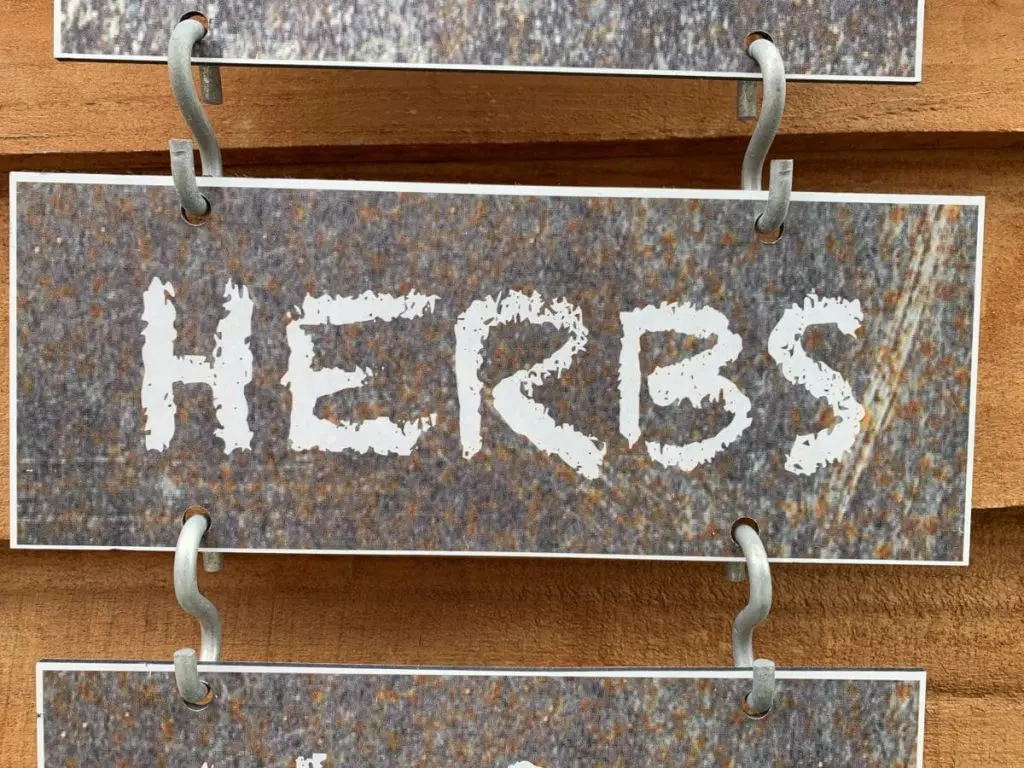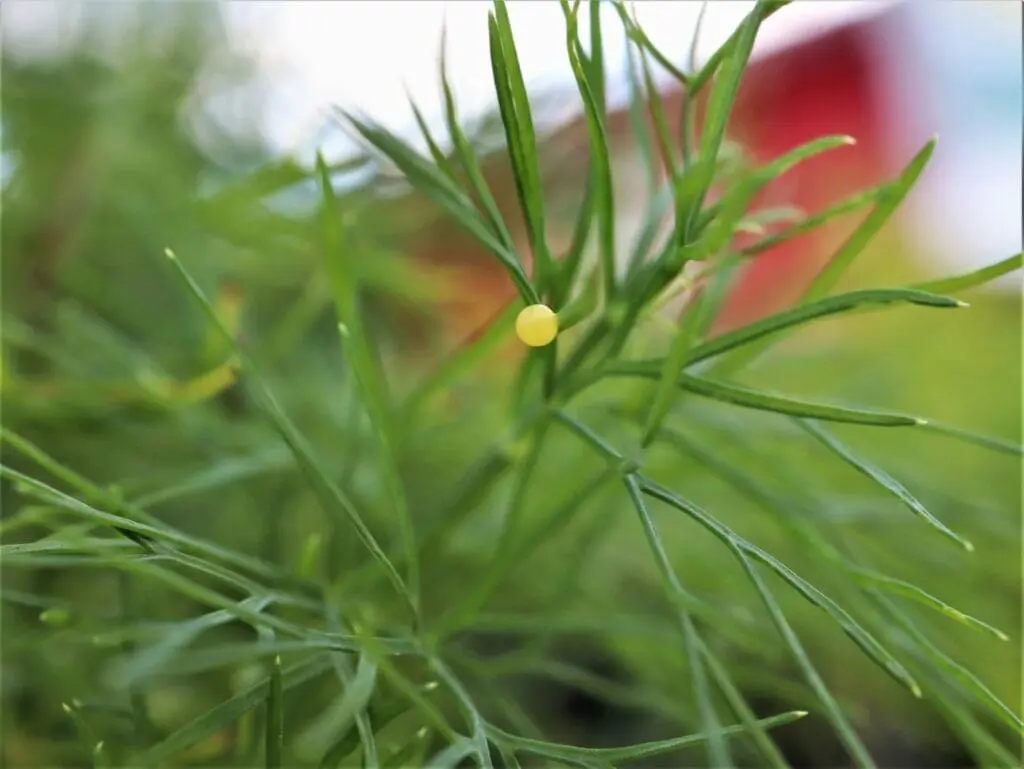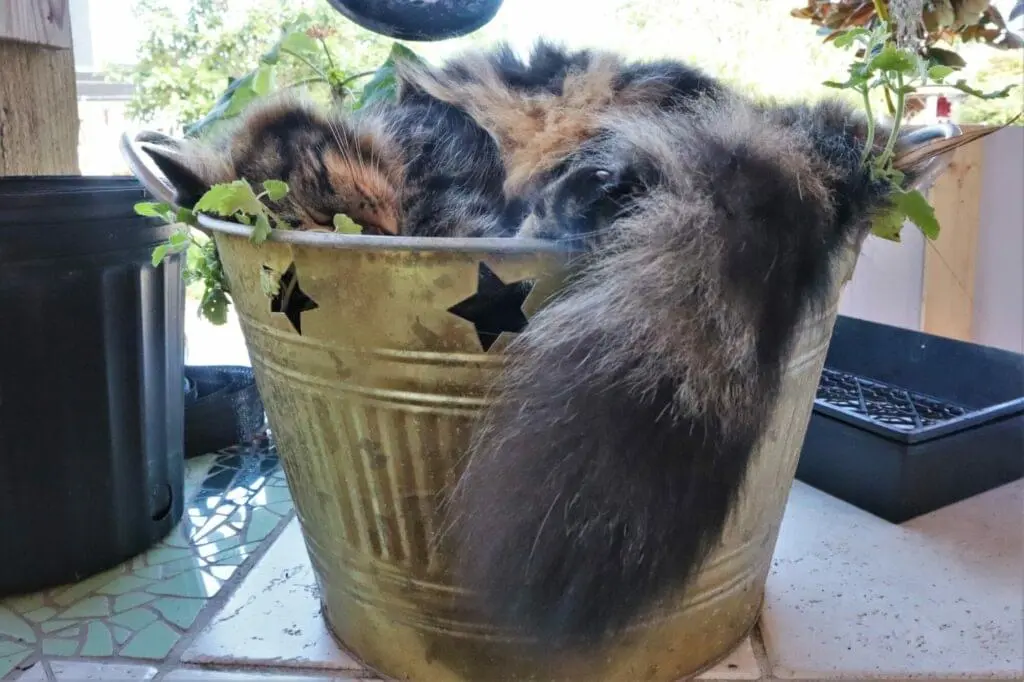by Amanda Rose Newton
Herbs are probably not the first plant that jumps to mind when dreaming of your Florida food garden, but they are a natural match for our soil and climate.

Many of the common herbs you find in the grocery store come with Mediterranean roots, meaning they have a love for warm climates and sandy, well-draining soil. This happens to be what we have more than enough of here in Brevard County, Florida where herbs can be grown year-round and in just about any landscape.
Due to their small size, herbs grow just as well in a container on your balcony as they do mixed into a garden bed.
The latter is a must for any butterfly gardener as many herbs such as rue, dill, fennel, and parsley serve as host plants for hungry caterpillars.

While most herbs can be grown in Brevard county with a high level of success, there are a few conditions and a few varieties such as edible Provence (French) lavender that don’t appreciate our conditions as much.
When planting herbs, be sure to choose an area that is well draining and gets an adequate amount (6 hours worth) of sun daily.
If you happen to have a compost pile, feel free to mix some into the first few inches of soil as this will help hold in extra moisture to reduce the watering need.
If you choose to plant in a container, choose a well-draining rich potting soil such as Foxfarm Strawberry Fields or Happy Frog.

Interested in growing herbs in Brevard County?? Check out our veggie + herb section to see what in-season herbs you should be planting right now. If we sell it, it grows here.
If you are stumped on which herbs to get started with, here are a few beginner herbs to plant along with tips on how to get the best out of what you harvest.
Herbs to Grow in Florida
Catnip: If you have feline friends, this is a must! This is also an incredibly hardy plant and vigorous! It does best in a container as it tends to spread its legs.

Chamomile: Consider starting a tea garden! Chamomile is an annual that dies in the summer heat but grows very well through the fall and winter. Makes a great companion for other tea favorites like sage.
Dill: If you have a butterfly garden, feel free to mix this in along with your flowers. While herbs might not be your first thought when planting a flower bed, the feathery foliage of dill creates a nice visual contrast to the bright florals.
Fennel: Another butterfly garden staple, this gem is drought resistant and tough! If you have never consumed it before, it’s great roasted or in salads.
Holy Basil: Popular in health food stores, holy basil can be grown for a fraction of the cost. The flowers are beautiful and preserve well for potpourri and for making your own botanical tinctures.
Lavender: While traditional edible lavender is a no-go, there are a few varieties, including “phenomenal”, that we can get away with here. Make sure you are purchasing a “Florida Friendly” lavender when making your purchase.
Lemon Balm: Another tea garden classic, this one has a beautiful aroma and, when crushed, the released oils double as an insect repellent.
Lemon Grass: Another culinary staple that is much cheaper to grow yourself! Lemongrass adds a special touch to just about any dish, being naturally at home in Asian cuisine. This one gets large, so be sure to choose a space for it to flourish. It doubles as standing in for ornamental grass in the landscape.
Marjoram: A little fussy but worth the effort, pair marjoram with basil if growing an herb container garden. Both herbs cannot stand wet feet.
Oregano: Oregano comes in many varieties, all of which are spreading and aesthetic. If your focus is edible landscaping, oregano can serve as an attractive groundcover in addition to spicing up your Italian-themed meals.
Parsley: Both flat and curly varieties are easy to grow and care for. Feel free to plant this one right alongside flowers or directly in containers. Treat your home like a four-star restaurant by garnishing every dish with parsley flair.
Patchouli: Well known for its strong scent, patchouli can be grown at home and made into your own fragrance, potpourri, or tincture.
Peppermint: Peppermint tends to take off and overtake your garden, so this one is better placed in a container it can have to itself. With so many varieties, you may have to commit to several containers to enjoy all the flavors ranging from chocolate to orange.

Rosemary: This hardy perennial can last through the seasons here in Florida, ultimately becoming less herb-like and more shrub-like over time. Rosemary can also be topiarized to resemble a small tree, perfect for Christmas celebrations. This one likes it on the dry side, so steer clear from overwatering. You have not lived until you have tried rosemary and sea salt as popcorn topping.
Rue: Rue is not as popular in the United States as it is abroad, but there are several great reasons to add rue to your herb garden. Its silvery foliage adds needed contrast to the landscape, and it serves as both a host plant for butterflies and a repellent for aphids.
Sage: Perfect for tea, attracting butterflies, and simply enjoying the fragrance, sage is a great choice for Florida. Like rosemary, a little water goes a long way for this full-sun lover.
Thyme: Like oregano, thyme comes in a creeping variety that can pull double duty as a ground cover. Great for seasoning veggies, seafood, chicken, and meat, thyme adds a unique flavor that other herbs just can’t hit.
With holiday celebrations just around the bend, consider adding herbs to your Fall grow list.
Not only will you be saving money harvesting your own fresh herbs, you will also be expanding your skill set as both a chef and a gardener. As is often the case in gardening, when you grow herbs you are also growing yourself!


